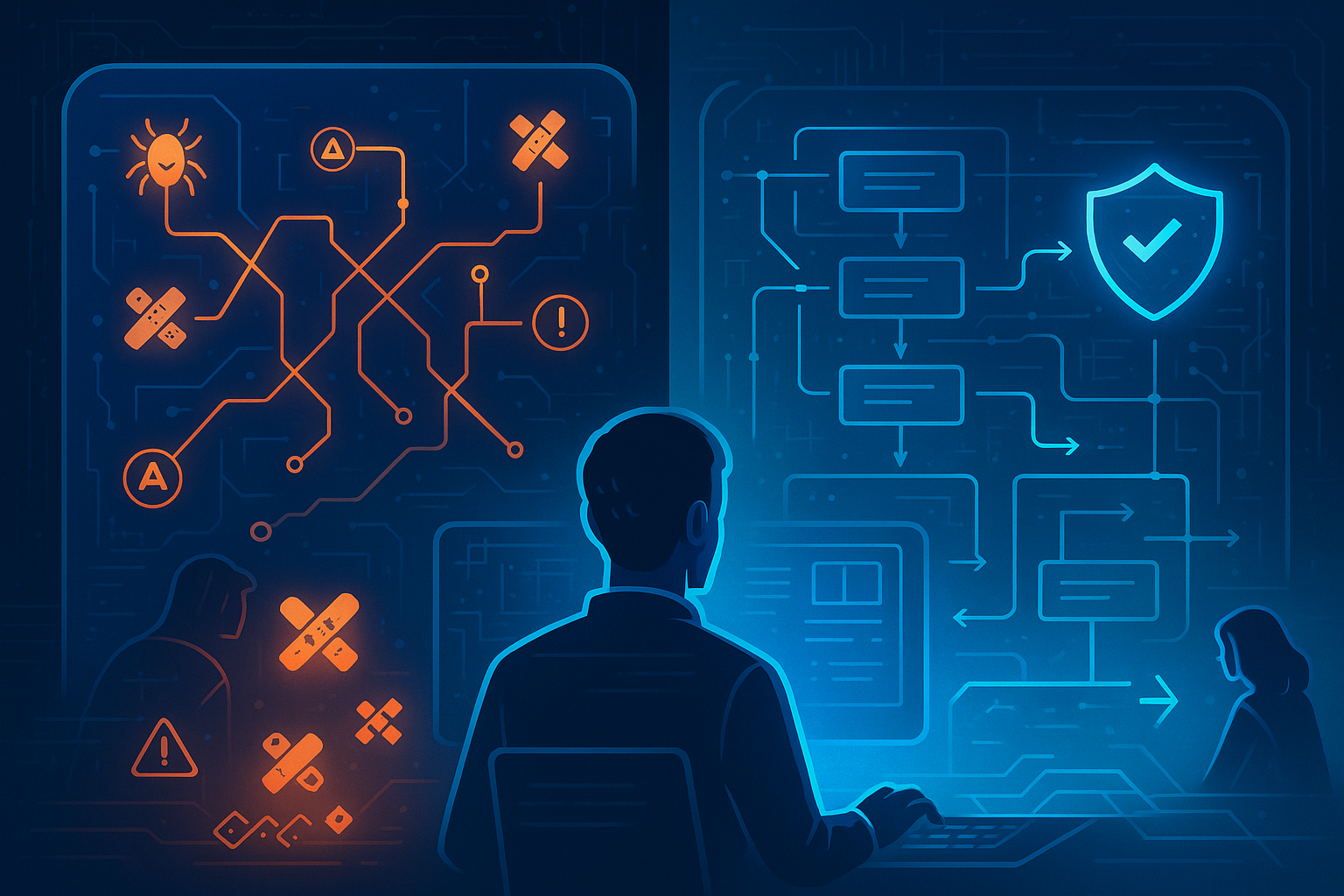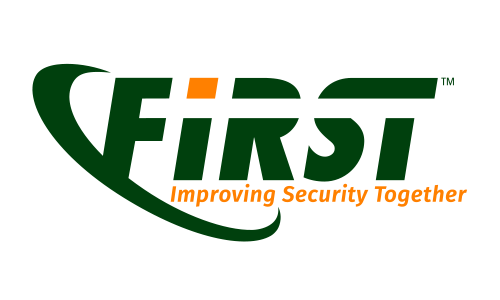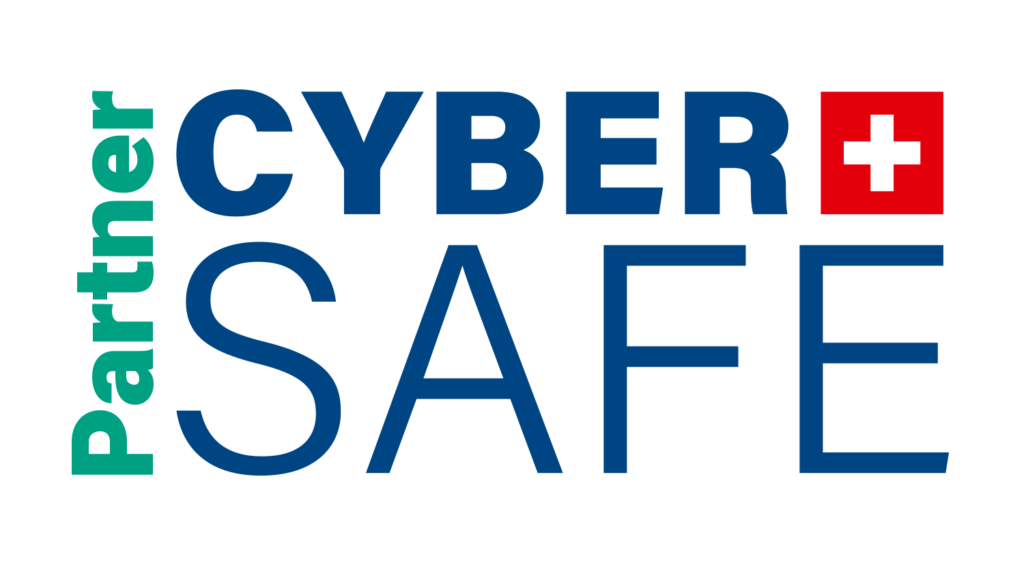Why Threat Modeling matters?
Threat modeling is more than a security exercise; it’s a mindset shift. It invites developers to think like attackers, anticipate risks early, and design with defence in mind. For teams building complex applications, it offers a structured way to ask: “What can go wrong?” and “What are we doing about it?”
In the current context, where security champions are emerging and development teams are maturing their secure coding practices, threat modelling offers a lightweight, collaborative, and scalable entry point. It’s not about perfection: it’s about awareness, ownership, and iteration.
It also drives business value:
- Reduced risk exposure by identifying threats before they manifest.
- Cost savings by catching issues early, when they’re cheaper to fix.
- Improved trust in software delivery, internally and externally.
Shifting left by centering security around developers
One of the most effective ways to embed security into the software development lifecycle (SDLC) is to make it developer-centric from the start. Threat modeling offers a natural entry point for this shift. Rather than introducing security as a late-stage gatekeeper—often perceived as a blocker—threat modeling invites developers into the security conversation at the design phase, when their influence is greatest and the cost of change is lowest.
By involving developers early, we achieve several key benefits:
- Understanding the “why”: Developers gain insight into the rationale behind security requirements. Instead of seeing security as arbitrary or bureaucratic, they begin to understand the attacker’s mindset and the real-world risks their code might face.
- Empowerment and ownership: When developers help identify threats and propose mitigations, they feel useful and valued. Security becomes something they do, not something that’s done to them.
- Reduced friction: Security issues caught late in the SDLC are costly and frustrating for everyone. Early threat modeling helps avoid rework, delays, and tension between teams.
- Better design decisions: Developers who anticipate threats are more likely to choose secure defaults, validate inputs, and design with least privilege in mind.
Empowering security champions through Threat Modeling
Security champions are the bridge between security and engineering. But Application Security specialists note that they face challenges in building robust security champions programs, as they often face burnout, unclear responsibilities, and lack of support. Threat modeling can help them succeed by:
- Creating visibility: Champions can lead or facilitate threat modelling sessions, making security visible and relevant to their peers.
- Building credibility: By identifying real risks and proposing mitigations, they demonstrate value beyond compliance.
- Fostering collaboration: Threat modelling is inherently cross-functional. It brings together developers, architects, and product owners around a shared goal.
- Scaling security: As described in Scaling TM with a developer centric approach, champions don’t need to be experts in every domain. With lightweight templates and repeatable patterns, they can guide teams through effective threat modelling without becoming bottlenecks.
By embedding threat modeling into regular development rituals like sprint planning or design reviews, security champions can shift security left in a sustainable, developer-friendly way. It becomes less about enforcing rules and more about enabling good decisions.
Getting started with Threat Modeling in your teams
Start small. Start now. Here’s a phased approach:
Phase 1: Awareness
- Run a 1-hour workshop to introduce the concept, for example prior to a sprint planning session.
- Use a simple app diagram and STRIDE to guide the discussion. There are also now various card games to introduce the topic in a fun way, like Elevation Of Privilege, Cornucopia or Cumulus to name a few.
- Focus on thinking, not documentation.
- Encourage champions to facilitate—not own—the process.
Phase 2: Integration
- Pick one feature per sprint to model.
- Use templates or checklists to reduce friction, the security champion can create basic but effective risk templates tailored on industry standards like those from OWASP.
Phase 3: Maturity
- Integrate threat modeling into design reviews or sprint planning.
- Track recurring threats and mitigations to build a knowledge base.
- Use metrics to measure awareness, not just outputs.
- Use success stories to reinforce value and adoption.
Attention points: why Threat Modeling fails
here are common pitfalls to avoid:
- Too much, too soon: Don’t aim for full-system models. Start with one flow, one feature.
- No ownership: If threat modeling is “security’s job,” it won’t scale. Empower teams.
- Lack of feedback: Celebrate wins. Share stories of threats caught early. Some might even go to gamification and rewards.
- No follow-through: Modeling without mitigation is theatre. Track actions.
- One-size-fits-all: Adapt the process to your team’s maturity and context.
Final Thought
Threat modelling is not a checkbox but a conversation. It’s a way to bring security into the room before the first line of code is written. For security champions, it’s a chance to lead with empathy, curiosity, and pragmatism.
Start with questions. Build habits. Shift left together.
This is how we help organisations move from reactive patching to proactive design.
🔗 Secure Development Assessment | Boost Compliance & Embed Security by Design | Approach Cyber






